Only six miles south of Jerusalem in the West Bank stands the oldest continually used place of Christian worship in the world, Bethlehem’s Church of the Nativity. Originally built in the fourth century on the spot Christians hold as the birthplace of Jesus, historical sources reference the site as early as the second century.
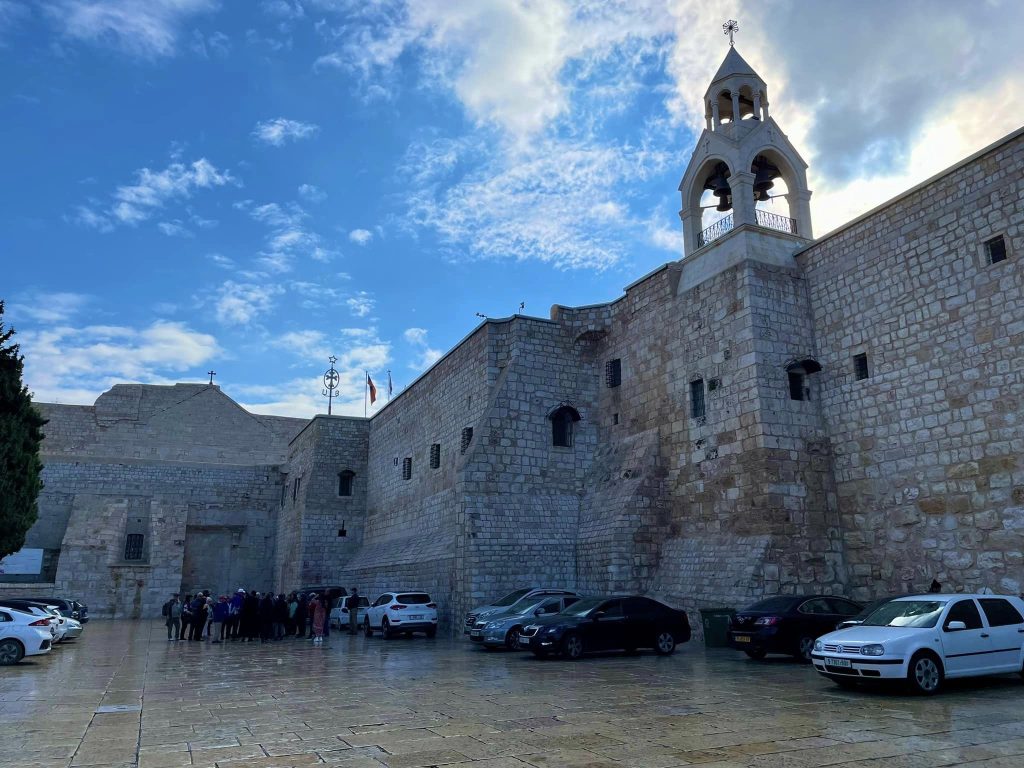
Today, the Church of the Nativity is one of the most important sites of Christian pilgrimage, alongside Jerusalem’s Via Dolorosa and the Church of the Holy Sepulchre.
Earlier this month, I led a group of thirty pilgrims to visit Bethlehem and its beautiful Church of the Nativity. Visiting in December took on special meaning as the birthplace of our Savior. Leading up to our visit and during our time there, I learned the extensive and powerful history of the Church of the Nativity which will inform your next (or first) visit to this incredible church.
Preserving A Holy Cave and Constantine’s Church
Commissioned by the Roman emperor Constantine in the fourth century, the first church built at the site was consecrated on May 31, 339. However, by the mid-third century, the site had already taken on a sacred position. Early church Father Origen writes about a cave in Bethlehem that was known to be the place of Jesus’s birth.
Thus, Empress Helena journeyed to the Holy Land in 327 AD and a basilica was constructed above the cave, parts of which still exist today. This church consisted primarily of an octagonal altar located directly above the cave, with a five-aisle nave and an atrium.
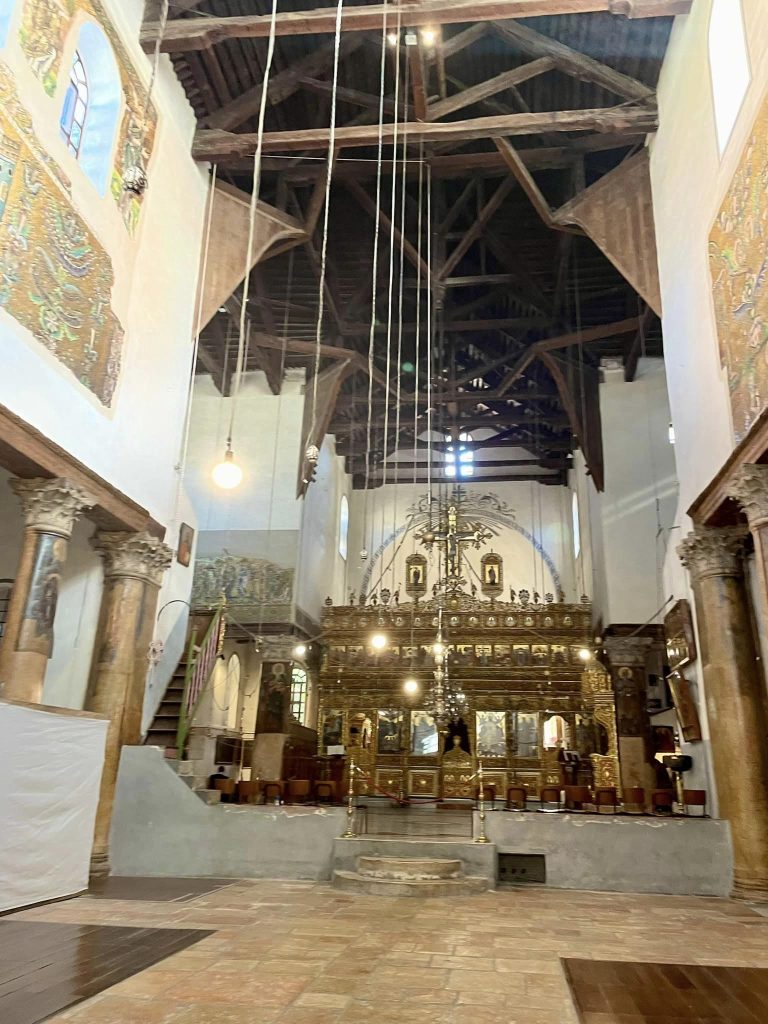
Intricate mosaic tile floors were part of the original Byzantine church, and they can still be seen today. Wooden floors have been built over the mosaic flooring for its protection, but at certain spots, special hatches have been installed that can be lifted to view the original fourth-century mosaics. There was a collective audible gasp when our group was able to view them. They are stunning, to say the least!
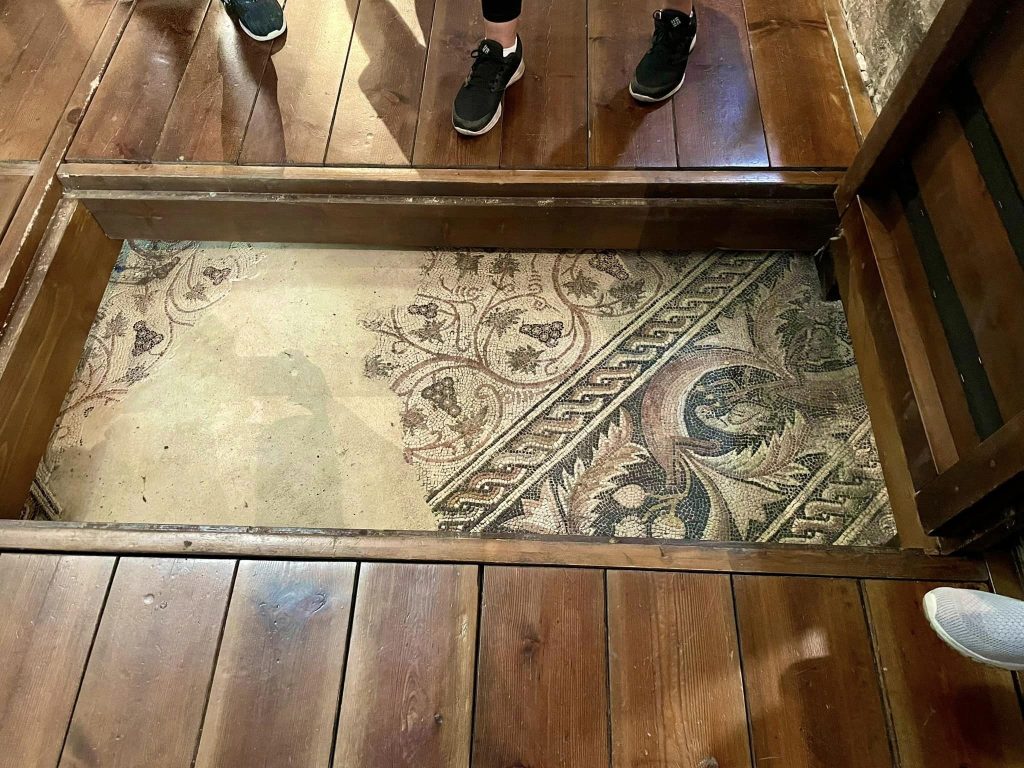
Justinian’s Church of the Nativity
Constantine’s original Church of the Nativity stood until the early sixth century when it was partly burned down. Although it is uncertain what event caused the fire, many believe that it was a result of the Samaritan revolts, which were responsible for the burning of several other churches in the region. Nevertheless, Emperor Justinian reconstructed the church soon after. It is this Justinian basilica that still stands today, although numerous modifications have been made through the centuries.
Many modifications and refurbishments occurred during the Crusader period (1099–1291 AD); however, some sections of the church still preserve Constantine’s original fourth-century construction. The Justinian church changed the octagonal altar area into a cruciform (cross) shape. The nave was extended and the atrium was covered to construct a narthex. Justinian erected fifty, 18-foot tall columns along the nave and transepts constructed from local stone quarried near Jerusalem’s Old City.
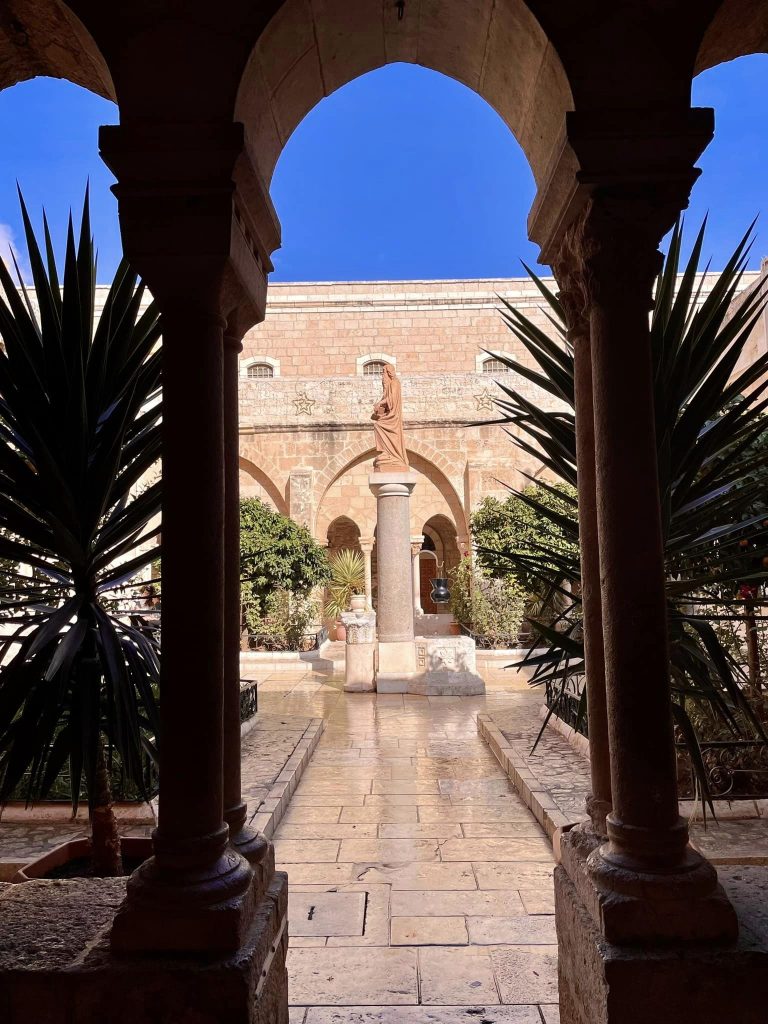
The courtyard and columned walkway offer beautiful places for reflection, prayer, and simply sitting and pondering what happened here over 2,000 years ago. The key is to never forget the history and miracle of the Christ child’s birth as you walk through the church and grounds.
The Crusader Period
Unlike most other churches in the region, the Church of the Nativity remained relatively unscathed between the time of Justinian and the modern day, avoiding destruction during the periods of instability and turmoil that accompanied the Sassanid, Islamic, and Crusader conquests.
Part of this was due to the church’s distance from Jerusalem, and the relative insignificance of Bethlehem for the region’s strategic defense. The church’s survival even led to stories and legends that it was miraculously protected from such events.
Islamic Rule
During the early Islamic period (c. 634–1099 AD), a Muslim prayer space was introduced into the church alongside the traditional areas of Christian worship. The site remained a pilgrimage destination for western Christians during this time. In 808 AD, Charlemagne sent a mission to the church to record its various details and possibly even carry out some repairs.
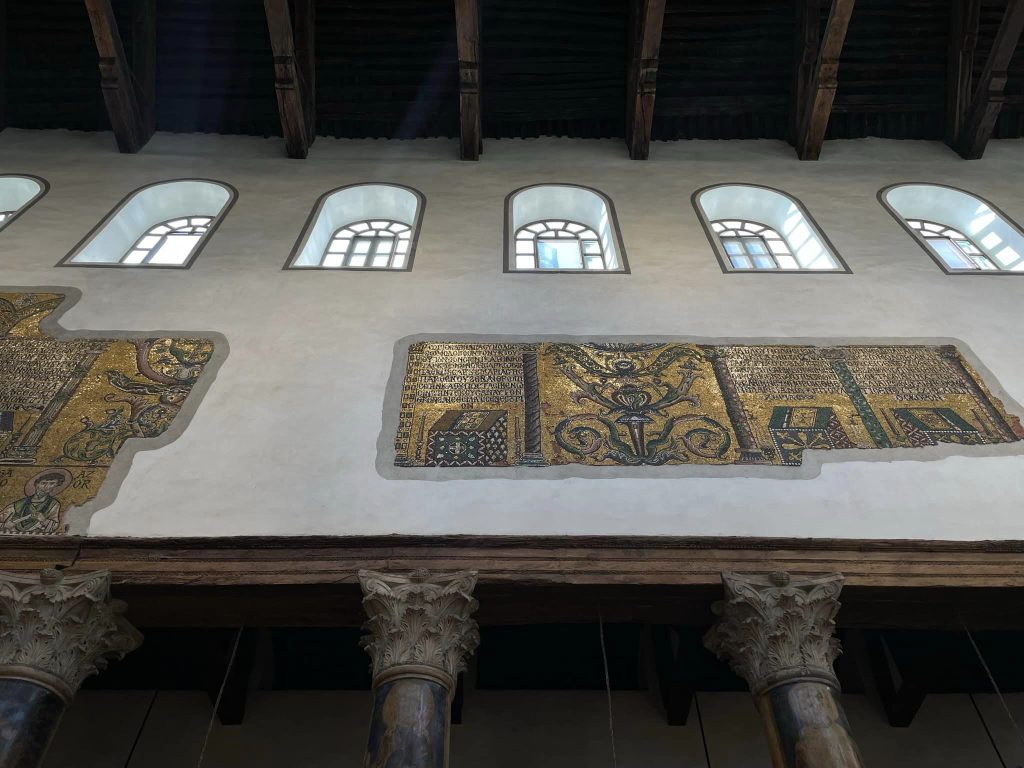
On June 7, 1099, the Crusading Franks conquered Bethlehem and the Church of the Nativity. The following year, Baldwin of Boulogne’s coronation as king of the Kingdom of Jerusalem took place inside the church. Baldwin II would likewise be crowned king at the site in 1119.
During its years under Crusader control, extensive repairs and modifications were made to the church, mainly to bring it into conformity with the Latin rite. The basic plan of the Justinian church was left in place, however, as well as many of the various architectural features, including the columns. The Crusaders further encircled the complex in a large wall, parts of which were later incorporated into various monasteries that still stand today.
Beginning in the Crusader period, numerous murals, mosaics, and paintings were added to the church, including the lavish wall mosaics that are still partially preserved today, and the column paintings of various saints and supplicants, which were likely a joint venture between the church leaders and wealthy pilgrims.
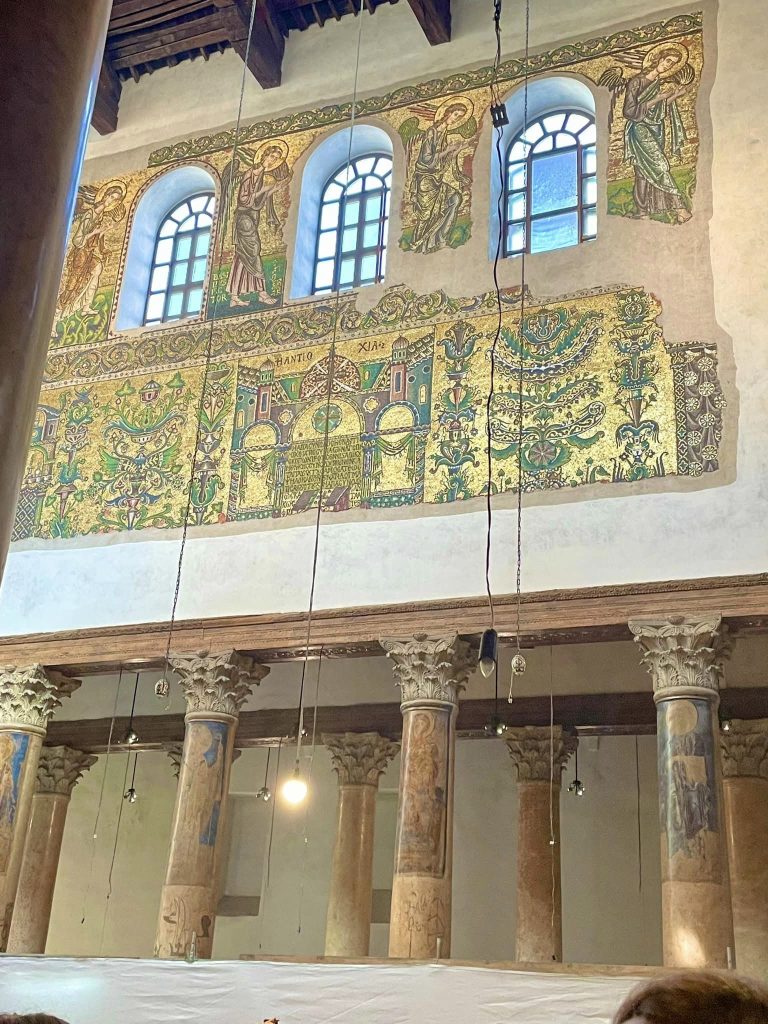
The Church from Saladin until Today
Upon Saladin’s conquest of the Holy Land (around 1187 AD), much of the Roman Catholic clergy left the Church of the Nativity. Nevertheless, the church suffered very little damage and Christian worship continued at the site under the Greek Orthodox, Armenians, and other Christian traditions. Eventually, the Roman Catholics returned. The Church would continue relatively unaltered until the Ottoman period (1516–1917 AD).
Under the Ottomans, much of the marble, which had once decorated the Church of the Nativity, was plundered, possibly to be used in refurbishing Jerusalem’s Dome of the Rock. Since graven images are strictly forbidden according to Muslim law, many of the faces of the images on the columns were removed and unable to be restored properly.
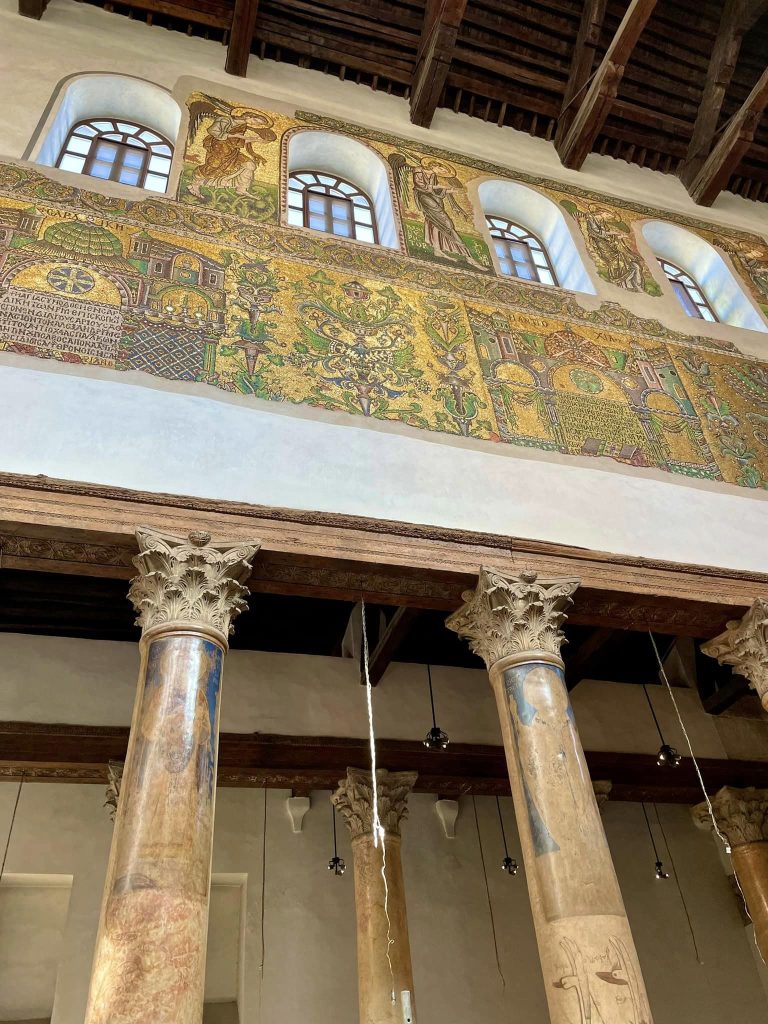
Although still in use, the church would enter a long period of decay. Likewise, the central nave of the church was used for non-worship purposes, including legal proceedings and even housing Ottoman troops in the middle east when required. Eventually, church officials regained control over the church although, over the next several centuries, it continued to fall into disrepair.
The Modern Church of the Nativity
In 2012, the Church of the Nativity was deemed a UNESCO World Heritage site. At the time of its listing, it was considered in danger due to its poor state of preservation. However, in 2013, church officials and conservators began massive renovation projects on the church, restoring it to much of its former glory, Today, nearly two million visitors and pilgrims visit the church every year.
The entrance into the church is called “the Door of Humility” and was constructed during the Ottoman period. This small rectangular doorway is less than five feet high. In order to pass through this door, visitors are forced to bow down as they enter the church. The fact that visitors and pilgrims have to bow down in order to enter the Church of the Nativity has a theological significance: We must humble ourselves in order to approach God.
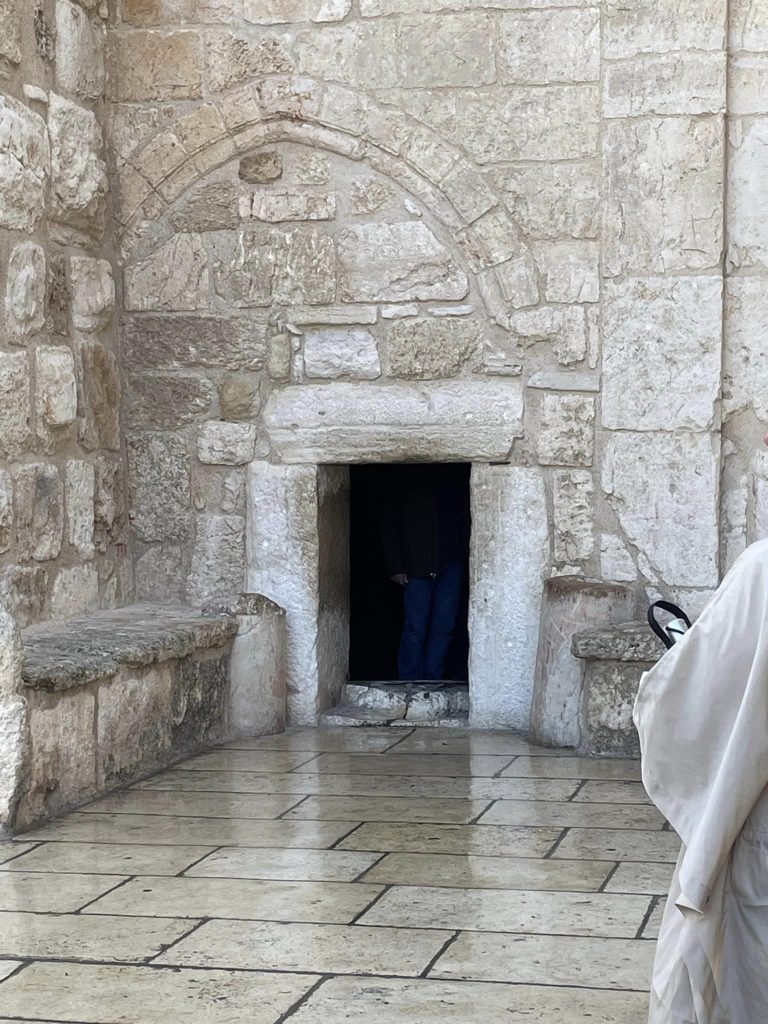
Accessing the Site Where Jesus was Born
The cave area where tradition holds that Jesus was born is located underneath the church’s altar area. Access is gained by descending steep marble steps into a grotto-like area. Various religions have donated ornate oil lamps that clergy and priests ensure are kept burning around the clock all year long.
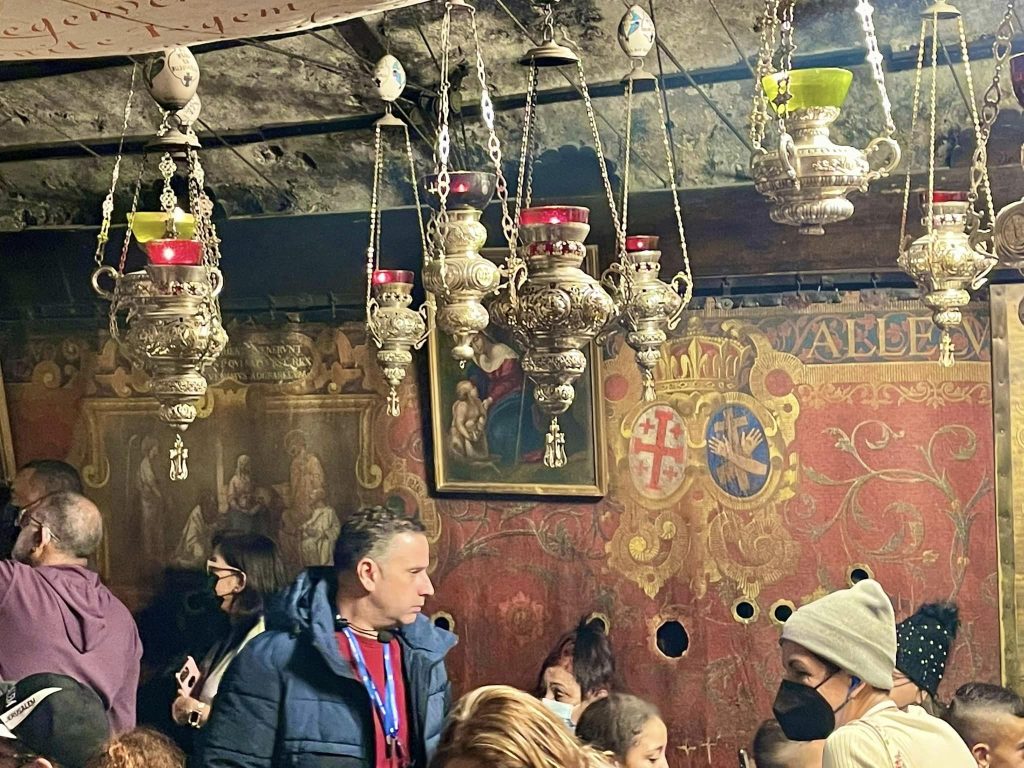
The traditional place of Jesus’ birth is marked by a 14-point star, which signifies that Jesus is the son of David. Why a 14-point star? The Hebrew name for King David, dwd, has a numeric value: (d = 4) + (w = 6) + (d = 4) = the number 14. Also, three sets of fourteen generations separate Abraham and the birth of Jesus (Matthew 1:17).
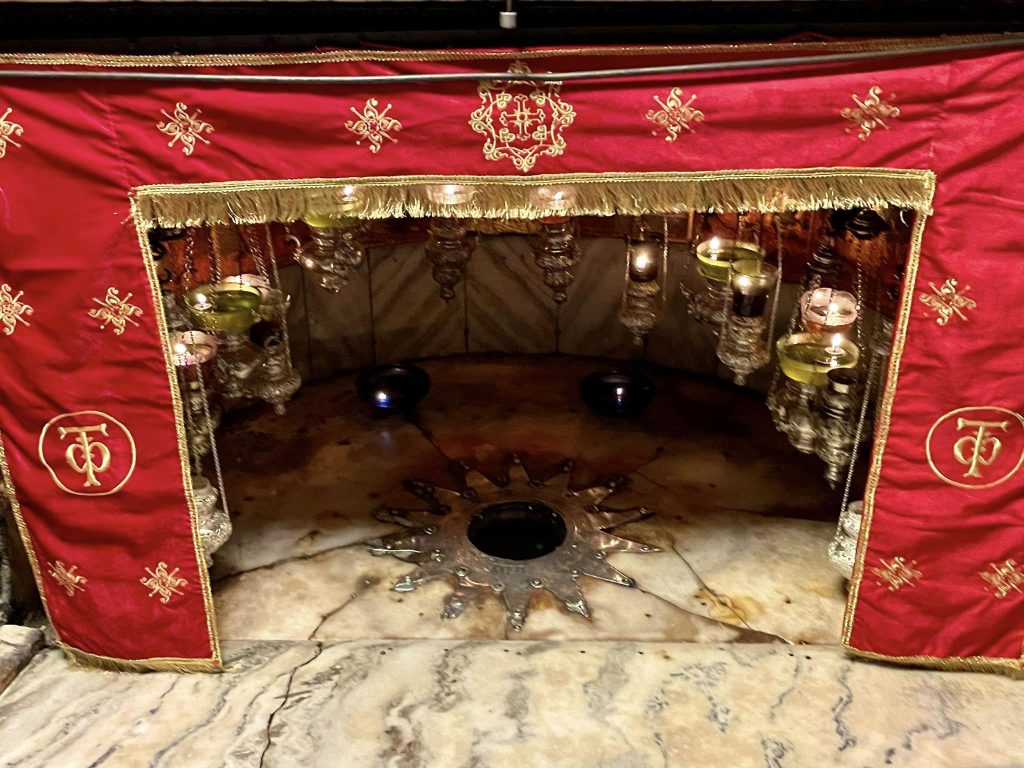
Visiting Bethlehem in December
Visiting Bethlehem in December is magical, to say the least. As the birthplace of Jesus, Bethlehem is a must-stop this time of the year during the holiday season. I lead private groups on tours of Israel and this “Christmas city” where the birth of Christ took place is always a favorite. The low temperatures are in the 40s, while the average temperature in the daytime is in the 60s. December is not the coldest month and I have never encountered inches of snow during this time; however, snow has been known to happen in December.
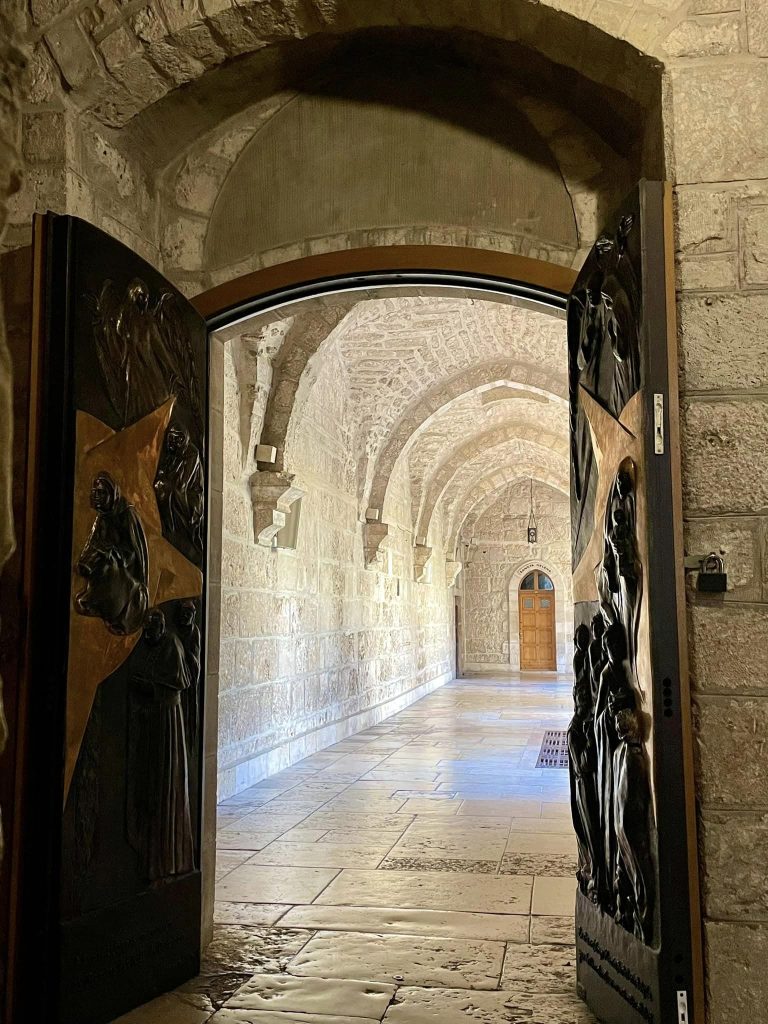
This first month of the winter season means that winter shadows create excellent opportunities for taking beautiful photographs. December is one of the lowest UV index months, as well, and the average rainfall is minimal. Winter conditions requiring snow removal are exceedingly rare. Cold winds and snow showers are rare this time of year, as well. Cloud cover and the dew point are low, though a wet day may happen (as it rained briefly when our group was there).
The Bottom Line
It is important to understand the historical and traditional significance of Christian holy sites. However, we cannot leave out the spiritual significance. Bethlehem, according to God’s Word, was the place hand-picked by God before the beginning of time to welcome His Son into the world.
Bethlehem was intentionally chosen by our Creator. And our Creator intentionally created you.
If you ever have a chance to visit Bethlehem, do not let the physical beauty of a church diminish the spiritual significance of that beautiful place.
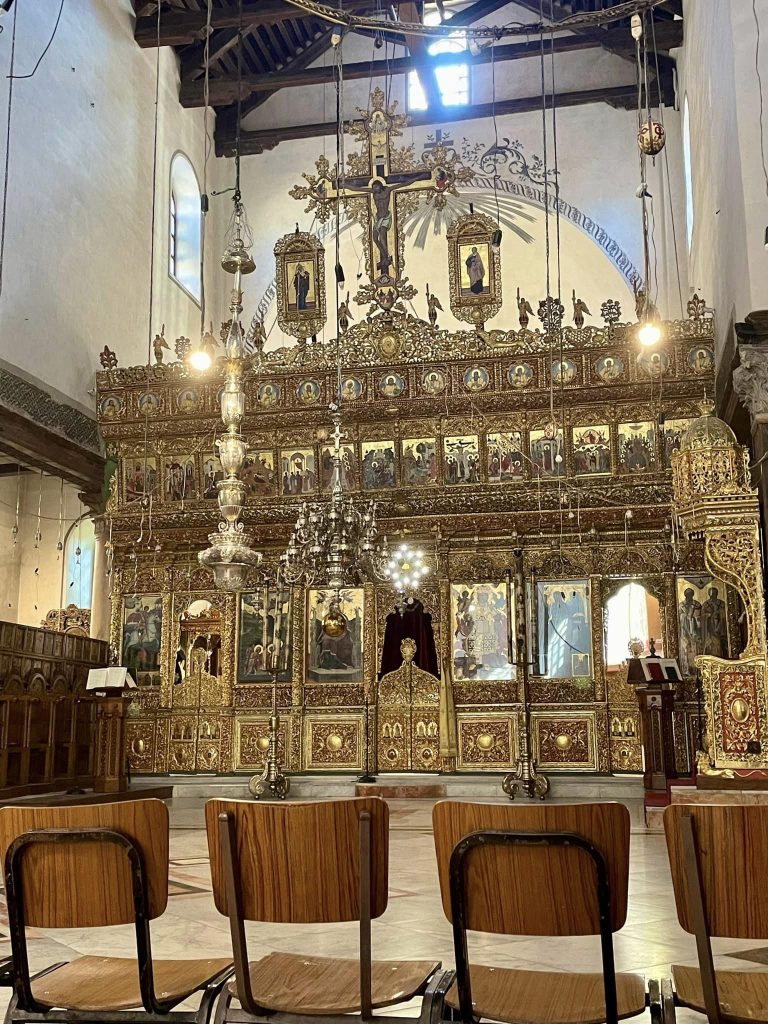
Related Posts:
- Best Bible Reading Plans
- Warriors in the Bible: 13 Essential Life Lessons to Learn
- 50 Motivational Bible Verses About Aging Gracefully
About the Author
Although Donna is a sought-after Bible teacher, her path from being unchurched to become passionate about sharing Jesus was not easy. Go here to read her God-breathed journey, “From Unchurched to Becoming a Multi-Published Author and Sought-After Speaker.” If you want to send Donna a quick message, then visit her contact page here.
{Some of these links are affiliate links. This means if you make a purchase through that link, the ministry may receive a small commission at no extra cost to you. Thank you for your ministry support!}
